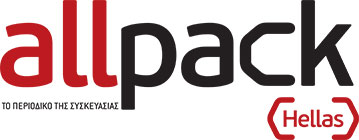Quotations trend lower despite rise in monomer costs / Converters reduce stock for balance-sheet reasons, putting added pressure on demand / No change expected in December
PE: It emerged rather early on that the rise in the cost of C2 monomer of EUR 30/t would not serve as a pointer for polyethylene prices. At the end of October, the first offers went out to converters indicating downward price adjustments. More and more producers followed suit over the course of the month. The trend prevailed across all types. Price increases were therefore not an issue. The reason was that demand was too weak, and supply was too good. Despite the cutbacks in output at many European plants, there was more material available on the market than required to fulfil the contracts. Since converters bought only what they absolutely needed and wanted to cut back stocks for balance-sheet reasons at the end of the year, demand remained stuck at a low level. Of course, no order impulses were expected at the end of the year anyway. For December, market players do not anticipate fundamental changes. The fall of EUR 7.5/t in the ethylene contract could well lead the way for more downward price adjustments. Apart from that, some producers would want to put themselves in a better position for year-end conversations. Therefore, further concessions are to be expected. The availability of material on the market is expected to remain adequate across all types. Since converters are still waiting in vain for orders, and demand is likely to stay weak in the Christmas month, many companies plan to send their employees home earlier at the end of the year.
PP: In November, the propylene contract increased by EUR 25/t. However, producers failed in their attempt to pass these costs on to processors. At the beginning of the month, negotiations mostly closed at a rollover. As the month progressed, the marked reluctance to buy led to downward price adjustments. Despite all the plant curtailments and maintenance, sufficient material was available. This was also due to stagnating ordering activity. Many processors are suffering from low demand and are therefore endeavouring to reduce stocks. For December, C3 was discounted by EUR 10/t. This will put further pressure on polypropylene prices during the Christmas month. Although several producers reported forces majeures towards the end of November, this is unlikely to have any impact on the supply situation in the short production month of December. Little material is bought at the end of the year anyway – the weak ordering situation is even prompting some companies to send their employees off for the Christmas holidays early. A look back at the year as a whole reveals some remarkable developments. In the first quarter, prices for polypropylene rose sharply – not least due to the delay in imports caused by the attacks by the Houthi rebels – and the difference to the C3 price widened. Since then, the gap between monomer and polymer has shrunk, but it is still there. Processors will have this in mind during their annual negotiations and are thus expected to demand further reductions.
PVC: Up until the second half of November, Western European producers remained unaccommodating and were unwilling to engage in discussions – it was regarded as a matter of course that the C2 increase (EUR 30/t) would be passed on. One PVC producer in particular adopted such a brash approach and was so averse to negotiating that this stubbornness will no doubt be reflected in the annual negotiations. For the rest, the persistent pressure exerted by the converters in light of their own rather underwhelming situation prompted a slight softening of the unyielding attitude of the majority of producers. All in all, price increases fluctuated around the EUR 5/t mark. There was no shortage of material even though many production plants were not running at full capacity and others had shut for maintenance. No momentum emerged from any industry on the demand side. Converters are thus making preparations for the end of the year – running down stocks to just their reserves. No major fluctuations in PVC prices are expected in December, either. The ethylene contract was fixed EUR 7.50/t lower, which should, in purely mathematical terms, mean a EUR 3.25/t decline for vinyl plastics. In any case, the focus is on bringing annual negotiations to an end. This year, too, ordering activity is very weak in the Christmas month. A number of converters are starting their holidays earlier and shutting down production already in the third week of December. It will be interesting to see how the anti-dumping duties that the UK has imposed on PVC imports will affect the EU market.
Styrenics: Not much happened in the dull month of November. The slight EUR 5/t increase in the styrene reference was not enough to jumpstart prices for polystyrene and EPS. Prices for ABS likewise experienced minimal adjustments at best, more nudged than propelled by a marginal increase in composite costs. Long story short – as in previous months, demand is too weak for producers to achieve significant margin improvements. At the same time, their margins are too thin to leave any room for concessions; individual corrections to some PS or EPS highs notwithstanding. Styrenics prices thus essentially follow the monomer cost change, with ABS depending, of course, also on butadiene and ACN. As the contract price for styrene declined by just EUR 7/t in December, EPS and PS prices are expected to remain largely stable at the end of the year. This also applies to ABS, where the other composite costs did not experience significant fluctuations either (butadiene down EUR 50/t, ACN up EUR 9/t). The minor upward adjustments that were made in November on the grounds of a slight increase in composite costs are now likely to be reversed.
PET: The situation on the European PET market in November was a particularly mixed one. Suppliers adopted various tactical approaches. A number of producers with evidently well-stocked warehouses engaged in price wars with lower-cost imports, granting major buyers up to triple-digit reductions. Producers with more flexible scheduling options, however, succeeded in placing their material on the market with significantly smaller reductions, or even a rollover. At the same time, demand remained very low, with consumer mood at rock bottom due to the significant rise in the cost of living caused by inflation. Developments in November would suggest that prices have bottomed out. The PX reference went down by EUR 35/t, almost cancelling out the previous month’s increase. The clearly strengthened US dollar is alleviating the pressure of imports and, at the same time, consolidations are starting to have an impact. No new momentum is expected on the demand side. A rollover would thus seem likely for the end of the year.
For more than 35 years, PIE has been an invaluable source of information for European plastics industry decision makers – a quick, yet in-depth look at the development of plastics markets and polymer prices. Available online 24/7 and as a printed newsletter twice a month. To read the entire report, go to www.pieweb.com and sign up for a 48-hour free trial!


































